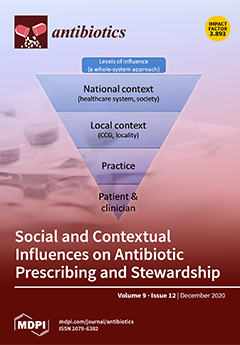The present study aimed to screen plants for bioactive compounds with potential antibacterial activities. In our efforts to evaluate plants from Borneo, we isolated and elucidated the structures of four natural products from the bioactive fraction of a chloroform extract of
Goniothalamus longistipetes using various chromatographic and spectroscopic techniques. The bioactive compounds were identified as a known styryllactone, (+)-altholactone ((2
S,3
R,3a
S,7a
S)-3-hydroxy-2-phenyl-2,3,3a,7a-tetrahydrobenzo-5(4
H)-5-one) (
1), a new styryllactone, (2
S,3
R,3a
S,7a
S)-3-hydroxy-2-phenyl-2,3,3a,7a-tetrahydrobenzo-5(4
H)-5-one) (
2) as well as a new alkaloid, 2,6-dimethoxyisonicotinaldehyde (
3) and a new alkenyl-5-hydroxyl-phenyl benzoic acid (
4).
1 and
4 showed broad-spectrum anti-bacterial activities against Gram-positive and Gram-negative bacteria as well as acid-fast model selected for this study. Compound
2 only demonstrated activities against Gram-positive bacteria whilst
3 displayed selective inhibitory activities against Gram-positive bacterial strains. Additionally, their mechanisms of anti-bacterial action were also investigated. Using
Mycobacterium smegmatis as a fast-growing model of tubercle bacilli, compounds
1,
2 and
4 demonstrated inhibitory activities against whole-cell drug efflux and biofilm formation; two key intrinsic mechanisms of antibiotic resistance. Interestingly, the amphiphilic compound
4 exhibited inhibitory activity against the conjugation of plasmid pKM101 in
Escherichia coli using a plate conjugation assay. Plasmid conjugation is a mechanism by which Gram-positive and Gram-negative-bacteria acquire drug resistance and virulence. These results indicated that bioactive compounds isolated from
Goniothalamus longistipetes can be potential candidates as ‘hits’ for further optimisation.
Full article






